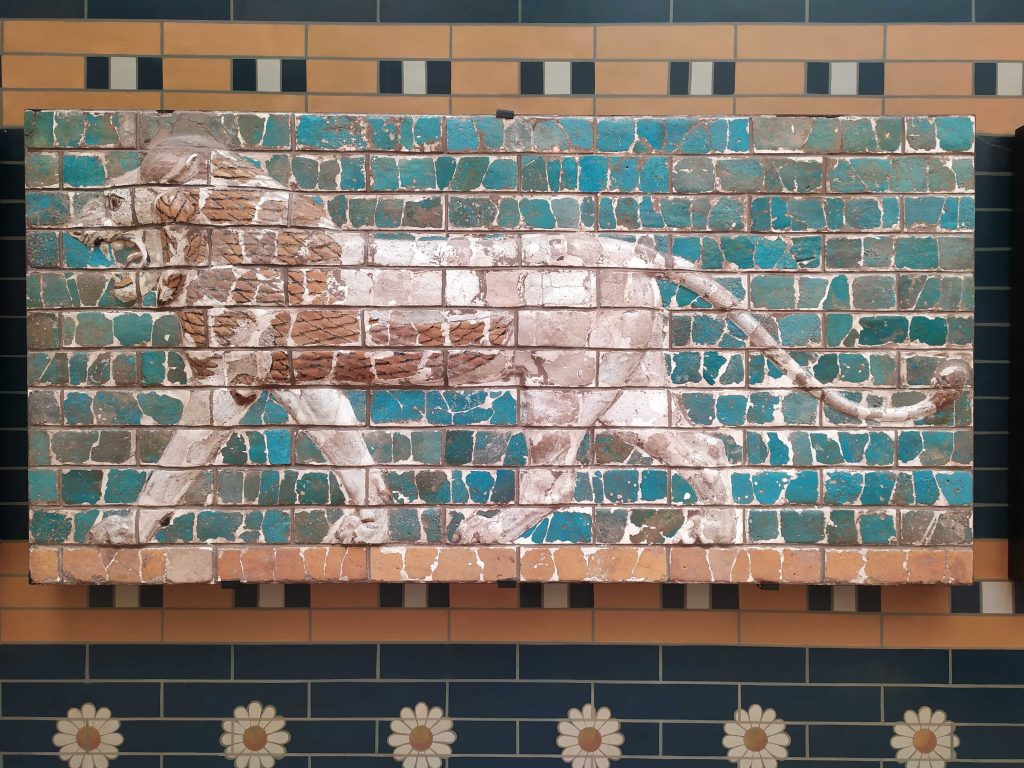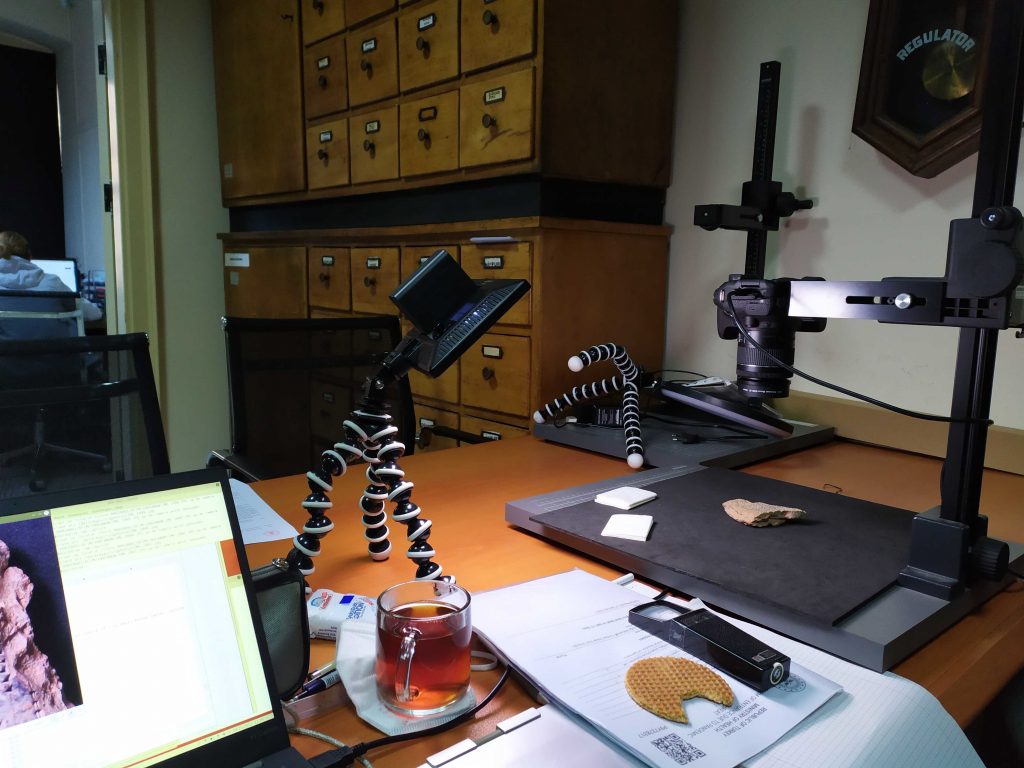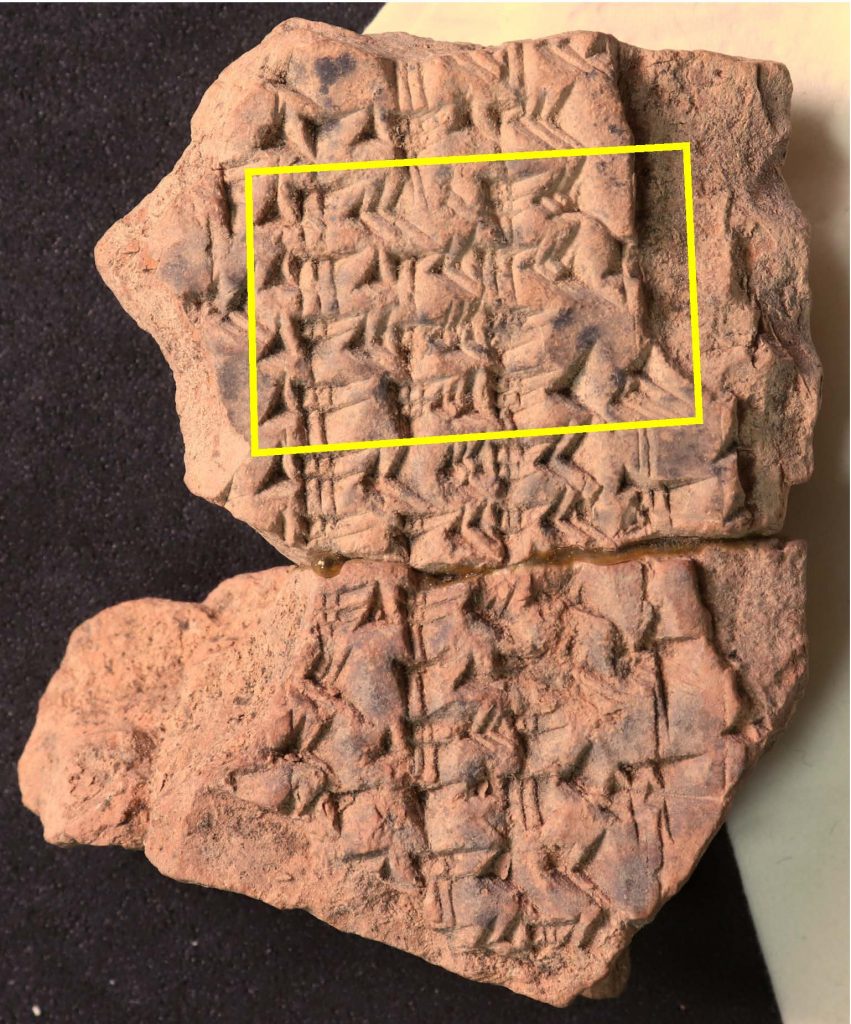24. November 2021, by Mathieu Ossendrijver
In October 2021, the ZODIAC project brought me to Istanbul for an eagerly awaited research visit to the cuneiform collection of the Ancient Orient Museum (Eski Şark Eserleri Müzesi). The Ancient Orient Museum belongs to the Archaeological Museums complex, which is located near the Topkapı palace in downtown Istanbul. The building overlooks Tophanı park, where one can also visit a History of Science museum, apart from admiring its ancient trees and squeaking parrots. The Ancient Orient Museum was designed by a French architect under the guidance of Osman Hamdi Bey – the Ottoman official, scholar, writer and painter, who was the founding father of archaeology and museology in the Ottoman empire.


The purpose of my visit was to study Babylonian astronomical tablets from Uruk. They came to light in 1912/13 during the first excavation campaign of the German Orient Society (Deutsche Orientgesellschaft). How did they end up in Istanbul? In accordance with the regulations of the Ottoman empire, to which Iraq belonged at that time, the finds were divided between Berlin and Istanbul. The 1912/13 campaign was the only one covered by these regulations. World War I brought an end to the German excavations in Iraq and when they were resumed in 1928, the Ottoman empire no longer existed. From then on the finds were sent to Baghdad. In the early 1940s the tablets were catalogued by the German Assyriologist Fritz Kraus, who was then in exile in Istanbul. Kraus identified about 100 astronomical tablets, for the most part small fragments of tables with computed data for the planets, the moon, and the sun – a type of texts known as mathematical astronomy. As it turns out, only very few astronomical tablets from the 1912/13 campaign ended up in Berlin. Most of the astronomical fragments were published by Otto Neugebauer in „Astronomical Cuneiform Texts“ (1955). My own investigation is part of an ongoing project that will result in a new edition and analysis of the Babylonian tablets with mathematical astronomy.

Where in Uruk do the tablets come from and who wrote them? The documentation about their findspots is incomplete, but it is believed that they were excavated near the Rēš temple, residence of the Babylonian skygod Anu and his spouse Antu. The fragments date from about 250-160 BCE, when Babylonia was under Seleucid rule. At that time the Rēš was Uruk’s main temple and an important center of Babylonian scholarship, comparable only the Marduk’s temple Esagila in Babylon. The tablets were produced by scholarly priests connected to the Rēš. Originally they were probably stored in one or more libraries within the temple – later excavations uncovered the remains of one such library in the south-eastern gate of the temple complex. For an animated reconstruction of the Rēš during this period see https://vimeo.com/62772222.

What is written on these tablets? Babylonian mathematical astronomy is all about the motion of the planets (Mercury, Venus, Mars, Jupiter, Saturn), the moon and the sun. A defining feature of the computations is that positions (longitudes) are expressed as a zodiacal sign and a number of degrees within the zodiacal sign. Some computations also deal with the distance of a planet or the moon above or below the ecliptic, which is the circle through the center of the zodiac. Babylonian scholars created the zodiacal framework near the end of the fifth century BCE. They named 12 zodiacal signs after nearby constellations, starting with the Hired Man (Aries), and ending with the Tails (Pisces). Each sign was divided into 30 units corresponding to 30 modern degrees of arc. All computations are executed and expressed in the 60-based number system known as sexagesimal place value notation. For instance, 10;0,45 Aries denotes a position in 10 degrees, 0 arcminutes and 45 arcseconds = 10 + 0/60 + 45/602 degrees of Aries. A special sign – the so-called Glossenkeil – was used for indicating vanishing digits („0“) within a number.
The tables were filled from top to bottom and from left to right like Excel spreadsheets. Having filled the top row with initial values, each column was filled from top to bottom by „updating“ the numbers from one to the next instance of a phenomenon, or from day to day, depending on the type of table. The fragment from Istanbul shown above belongs to a table with daily positions of the moon. By zooming in on a few positions, we can recognize a pattern:
(day) 12: 30;08,40 (Capricorn),
(day) 13: 12;23,50 Aquarius ,
(day) 14: 24;57 (Aquarius),
(day) 15: 7;48,10 Pisces.
On day 12 the moon is said to be in 30;08,40 degrees of Capricorn. This number appears unusual for two reasons. First, it contains an extra „zero“ (Glossenkeil), which was added to indicate that the 30 and the 8 are separate digits and not a single digit 38. Secondly, the position is actually beyond 30 degrees of Capricorn, in the first degree of Aquarius. But this is how the scholars in Uruk usually expressed a position in the first degree of a zodiacal sign. In order to see the promised pattern in the numbers, we compute the differences from day to day:
from day 12 to 13 = 12;15,10 degrees,
from day 13 to 14 = 12;33,10 degrees,
from day 14 to 15 = 12;51,10 degrees.
These differences represent the moon’s daily motion along the zodiac. We can easily see a pattern now, because they increase by 18 in the second digit. The value 0;18 is used throughout the tablet. It is repeatedly added until the moon’s daily motion reaches a maximum, and then repeatedly subtracted until it reaches a minimum, etcetera, resulting in a „zigzag sequence“. Only the positions in the zodiac were written on the tablet, not the zigzag sequence that was used for computing them. The Babylonian scholars also used such zigzag sequences for modeling periodic variations in the motion of the planets and the sun.
The Babylonian evidence for mathematical astronomy is limited to Babylon and Uruk. But some of this knowledge, including the most complex algorithms for computing positions of Mercury or the moon, somehow made it to Greco-Roman Egypt, where they show up in Demotic ostraca and Greek papyri. The project ZODIAC aims to develop a convincing account of this remarkable phenomenon of the cross-cultural transfer, translation and adaptation of Babylonian astronomical methods and the associated astrological practices.